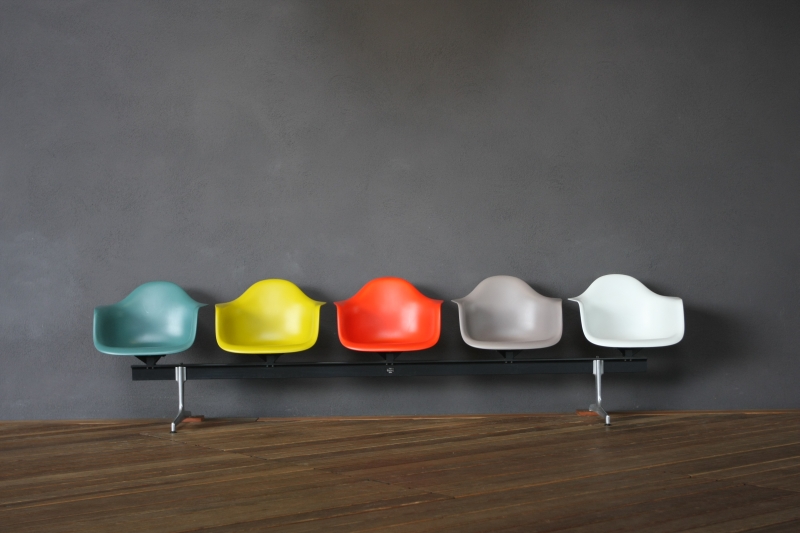Blurred Lines. Reprise
In our recent post “Blurred Lines or What if Pharrell Williams and Robin Thicke designed furniture?” we took a stroll along the very fine border between being inspired by a piece of furniture design and plagiarising a piece of furniture design.
One of the most popular sources for both inspiration and plagiarism is Charles and Ray Eames: for inspiration because of the many ground breaking designs, processes and theories the pair developed over the decades, for plagiarism because of the endearing popularity and commercial success of the Eames’ canon.
In a 1977 conversation with the Owen Gingerich Charles Eames talks at length about plagiarism & plagiarists including some very interesting passages on why the pair stopped striving for patents themselves, preferring to leave such decisions to the manufacturers, how Herman Miller noticed increased sales of the Eames’ plastic chair collection every time new copies appeared and the importance of the moral patent that exists between designers, an unspoken understanding that “thou shalt not copy”
Having discussed the prevalence of copies of Eames’ chairs Gingerich asks, “But don’t you have to worry about plagiarism?”
“What you really worry about in the design of furniture or in architecture”, replies Eames “are the bad copies, when your idea is used in a kind of booby way. You don’t mind if someone carries your idea further in a better way, although at first your nose may be a bit out of joint.”1
A succinct, unequivocal differentiation between inspiration and copying, and one which also makes beautifully clear that design is a process and products are but a physical manifestation of that process and not the raison d’etre. And an understanding which in addition neatly underscores the equally important difference between “design” and “styling”.
By way of a postscript, the conversation begins with a discussion about some chairs Eames and Gingerich had seen at Arlanda Airport Stockholm a few years earlier, a passage that offers some nice insights into both Charles Eames’ understanding of who was responsible for the Eames’ designs and also the problem of the ubiquitous global designer……
Owen Gingerich: Most people, I believe, think of you in terms of chairs. I remember so well how, when we were starting on the Copernicus show, we arrived at the Arlanda Airport in Sweden and you looked around and said “These are all my chairs”
Charles Eames: I probably said, “These are all our chairs”
Owen Gingerich: Never mind.
Charles Eames: But it’s unlike me to say “my chairs”
Owen Gingerich: But nevertheless they were from your designs. Were they Scandinavian copies, or were they really imported?
Charles Eames: By that time there were licensed manufacturers in Europe. But honestly, it’s a disappointment to walk into a Swedish airport and not see good Swedish chairs. It’s sort of like walking into a European restaurant and being offered a Kansas City steak. Particularly in Scandinavia, as a traveller you should be allowed to enjoy some indigenous quality and some exotic experience.
1. Owen Gingerich, A Conversation with Charles Eames, The American Scholar Vol. 46, No. 3 (Summer 1977), Washington, D.C.
Tagged with: Charles and Ray Eames, Charles Eames
